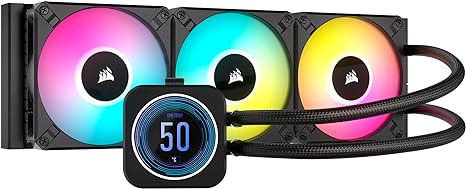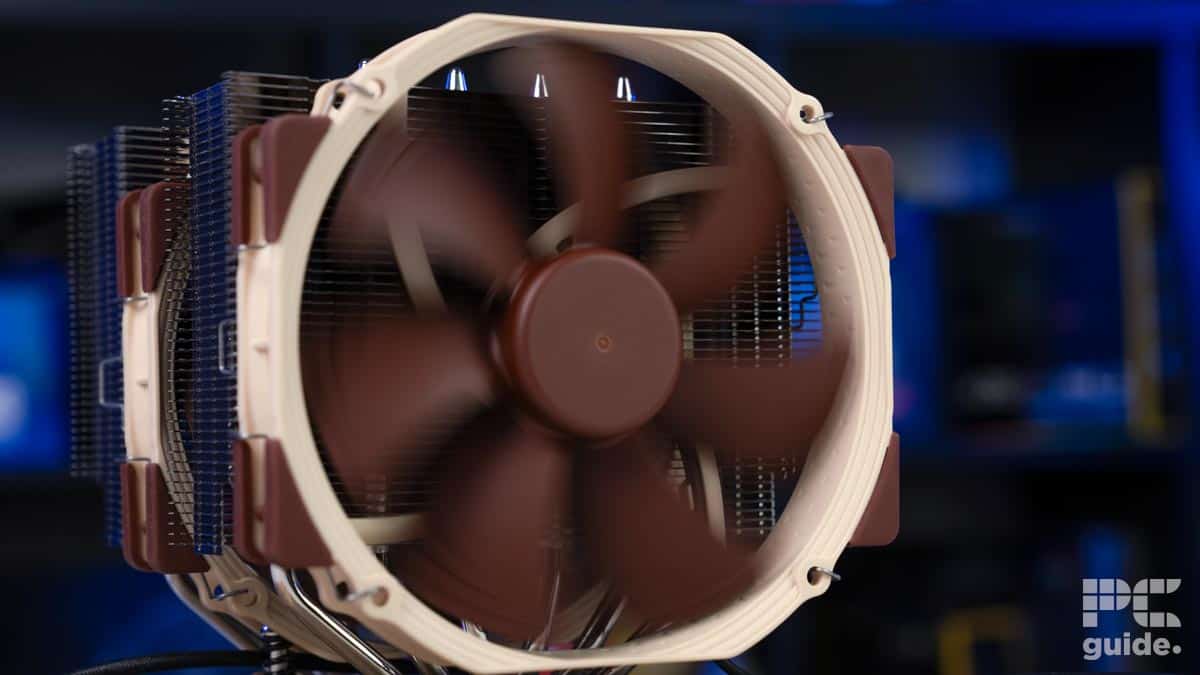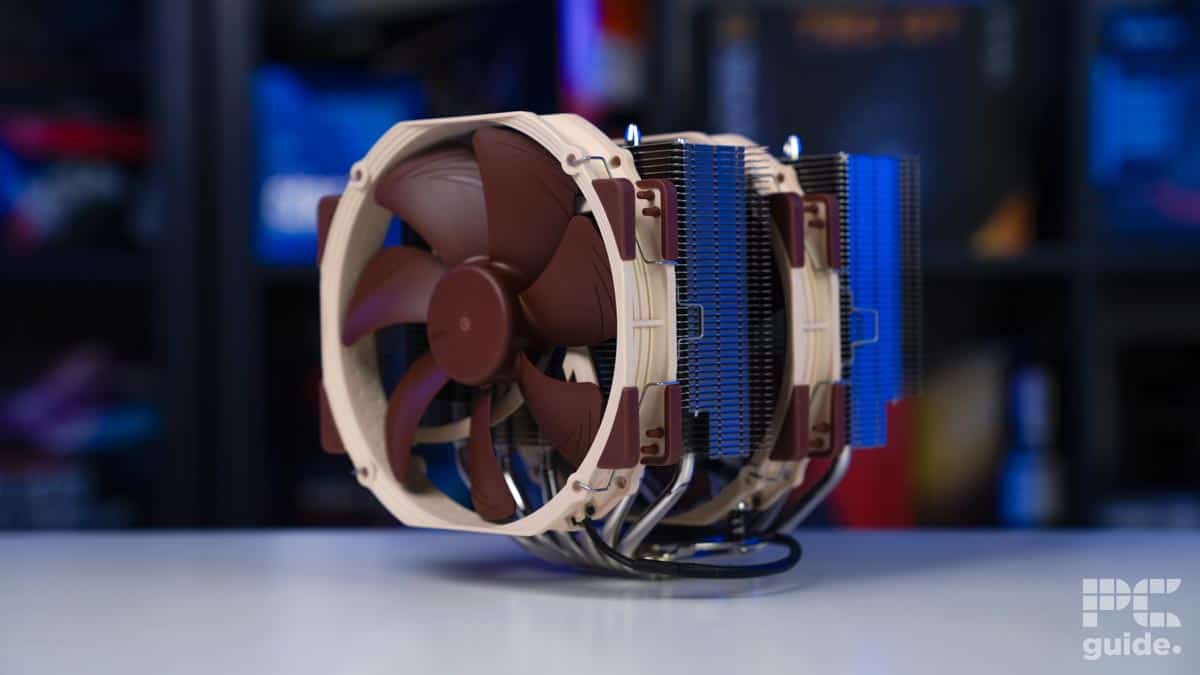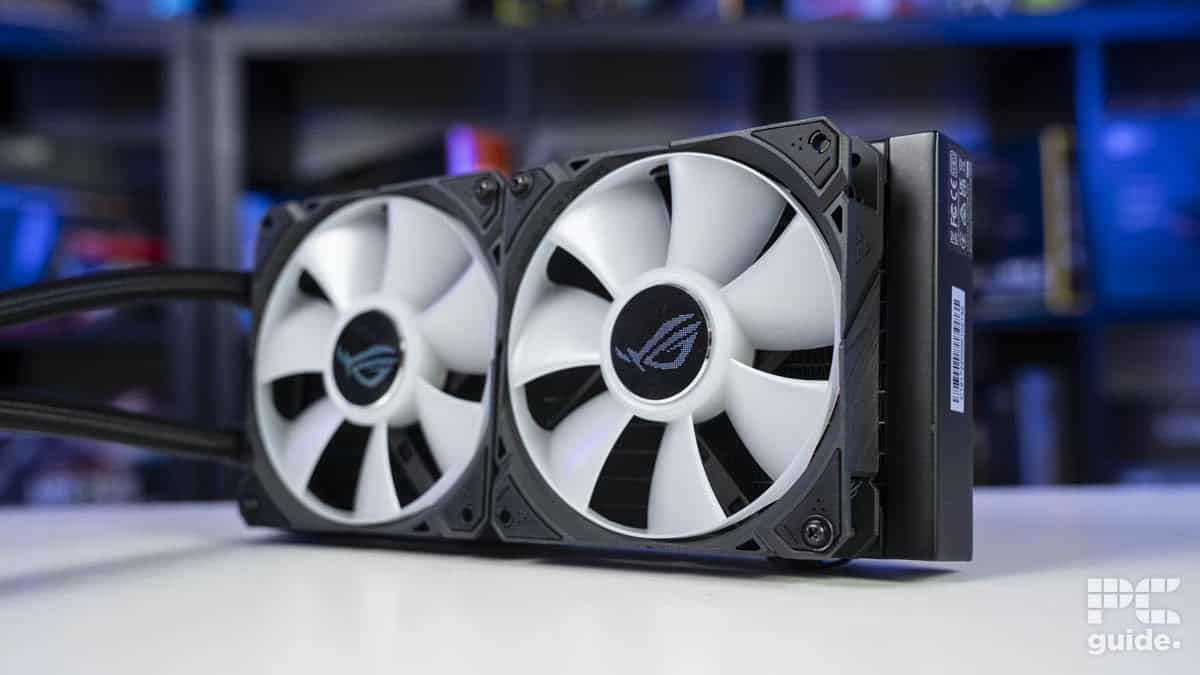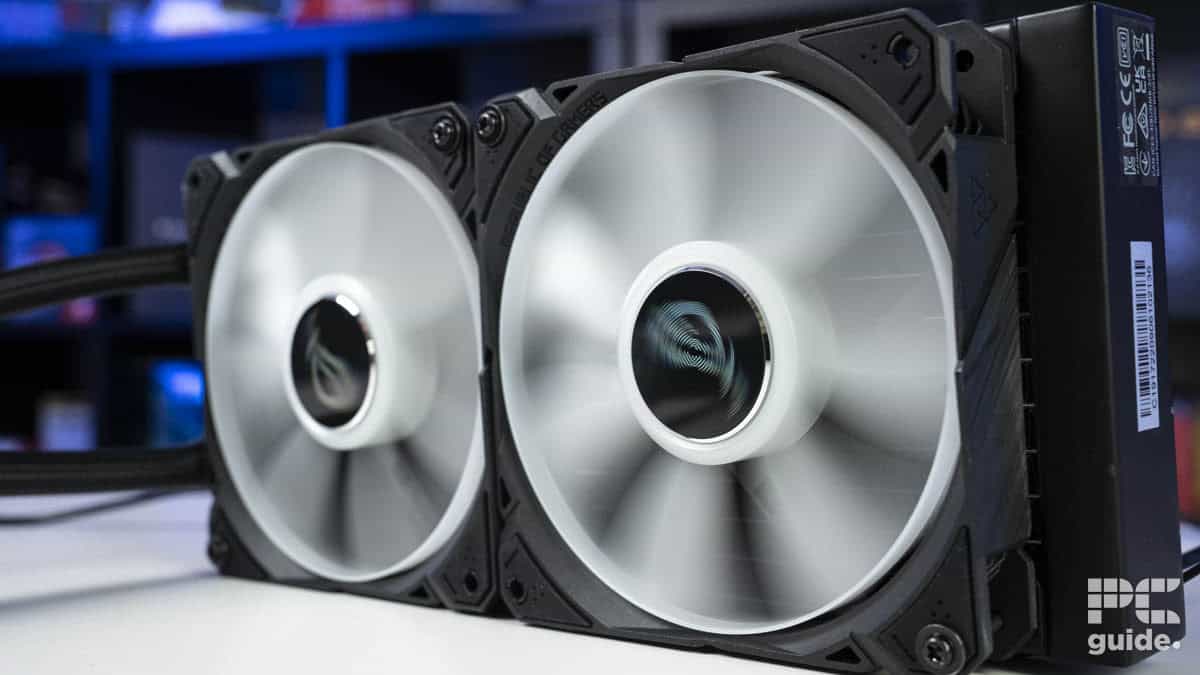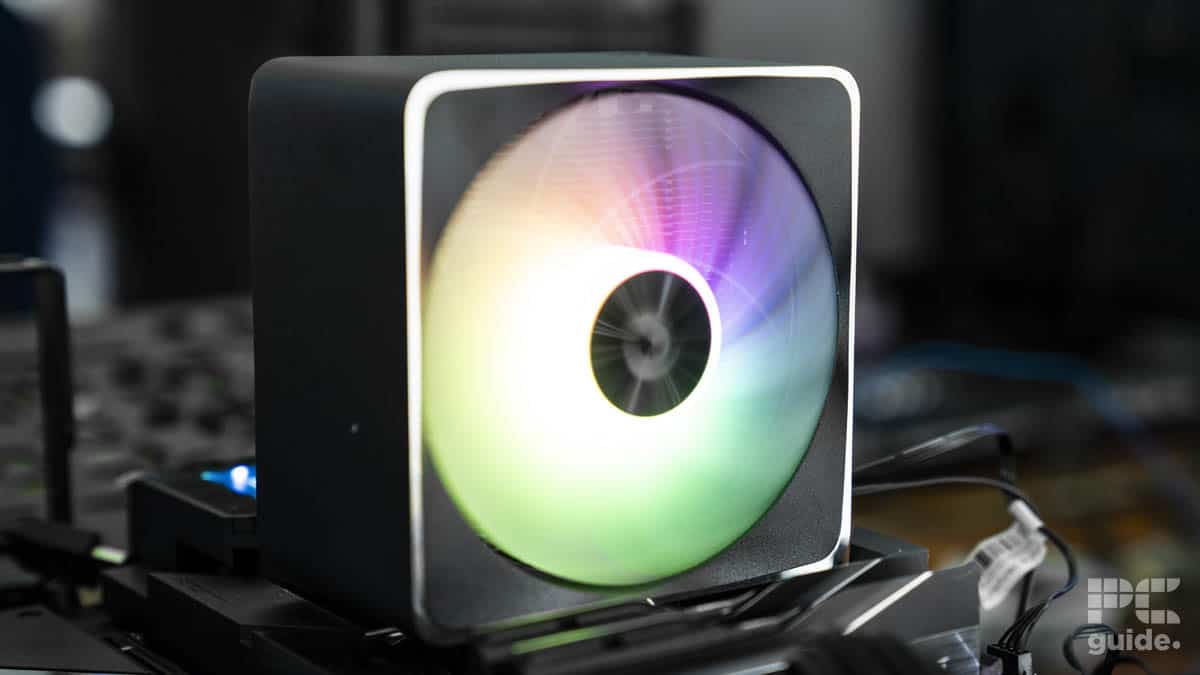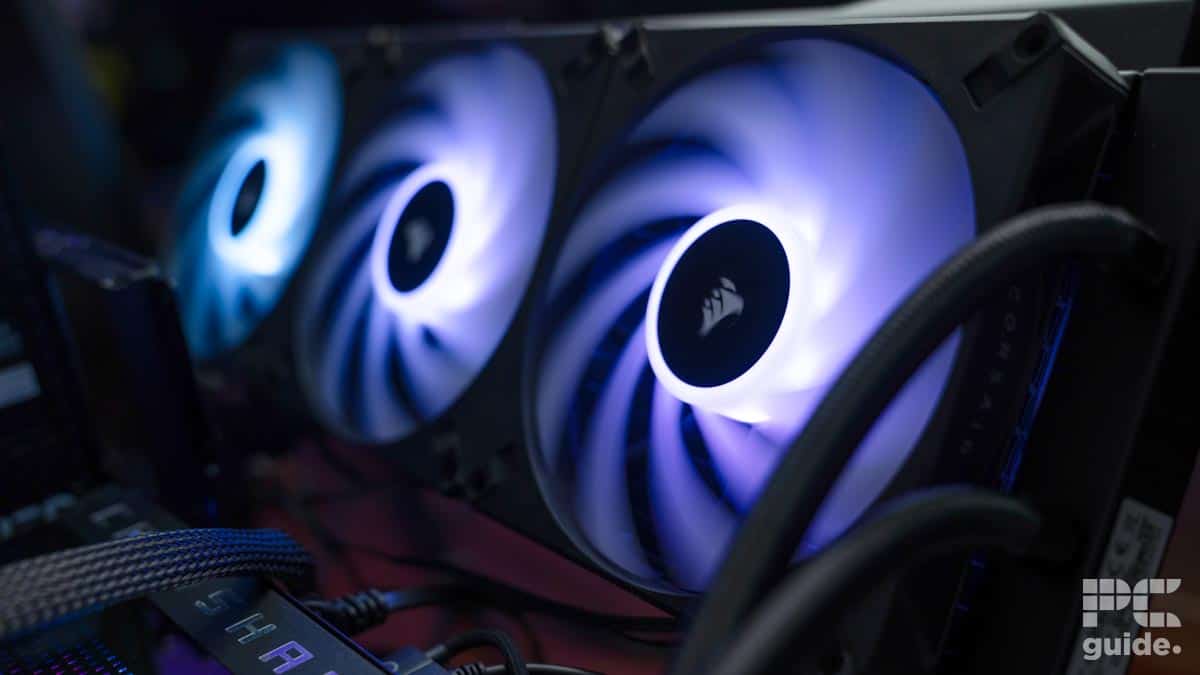Best CPU cooler for Ryzen 7 9700X – our top picks
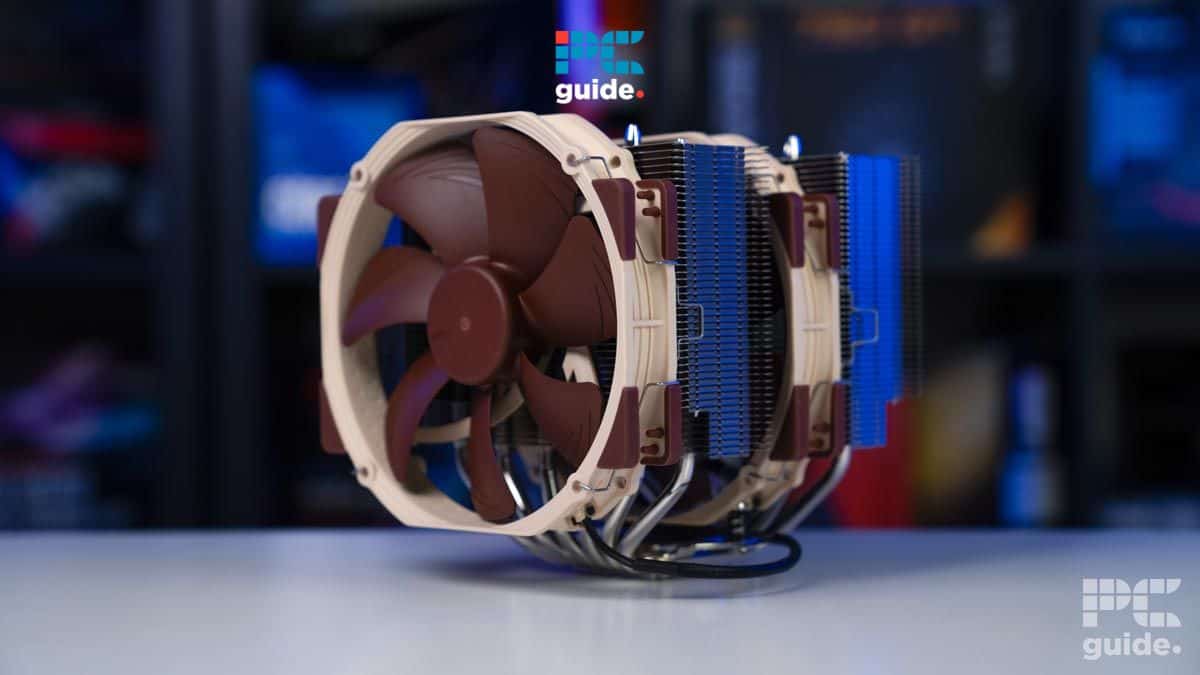
Table of Contents
Even though the Ryzen 9000 series was delayed, the wait is over, well, partially, as the Ryzen 7 9700X has been released and is available for purchase. Judging from its specifications, it’s all set to take the crown of the mid-range king. Striking a good balance between performance and value is where AMD's “700X” CPUs shine, and we have high hopes for this processor.
That said, great performance comes at the price of a high thermal output, and since the Ryzen 9000 series processors come unlocked for overclocking, this means a higher TDP and thermal output. This can lead to thermal throttling, which drops the CPU's performance.
Prime Day is finally here! Find all the biggest tech and PC deals below.
- Sapphire 11348-03-20G Pulse AMD Radeon™ RX 9070 XT Was $779 Now $739
- AMD Ryzen 7 7800X3D 8-Core, 16-Thread Desktop Processor Was $449 Now $341
- ASUS RTX™ 5060 OC Edition Graphics Card Was $379 Now $339
- LG 77-Inch Class OLED evo AI 4K C5 Series Smart TV Was $3,696 Now $2,796
- Intel® Core™ i7-14700K New Gaming Desktop Was $320.99 Now $274
- Lexar 2TB NM1090 w/HeatSink SSD PCIe Gen5x4 NVMe M.2 Was $281.97 Now $214.98
- Apple Watch Series 10 GPS + Cellular 42mm case Smartwatch Was $499.99 Now $379.99
- ASUS ROG Strix G16 (2025) 16" FHD, RTX 5060 gaming laptop Was $1,499.99 Now $1,274.99
- Apple iPad mini (A17 Pro): Apple Intelligence Was $499.99 Now $379.99
*Prices and savings subject to change. Click through to get the current prices.
So, having a robust cooling solution is crucial to optimal performance. However, we understand that selecting one option is difficult due to the sheer amount of options available. So, we took the liberty of researching for you to come up with a list of options. We then thoroughly tested those options in-house and put forth those with excellent performance.
This should help you kick off your buying journey in the best possible manner and make an informed decision. If you're interested in checking out other options, our cooling hub has plenty of CPU coolers that we've reviewed. If you're looking for a complete overhaul, we've also got you covered with our selection of the best GPUs for Ryzen 7 9700X. On top of that, you can order a 9700X for your build right now and beat the scalpers.
-
Best CPU Cooler for Ryzen 7 9700X
Noctua NH-D15
- Cooling Method: Air
- Material: Aluminium, Copper
- Max fan speed: 1500 rpm
- Noise level: 24.6 dBA
- Fan size: 140mm
- Thermal paste: Included
-
Best AIO cooler for Ryzen 7 9700X
ASUS ROG Ryuo III 240
- Cooling Method: Liquid
- Noise level: 36.54dBa
- Material: Copper, Aluminium
- Fan size: 120mm
- Max fan speed : 2,200 rpm
- Thermal paste: Included
-
Best budget CPU cooler for Ryzen 7 9700X
APNX AP1-V
- Cooling Method: Air
- Noise level: 16.1 – 32.8 dBA
- Material: Aluminum
- Fan size: 120mm
- Max fan speed : 1800 rpm
- Thermal paste: Not included
-
Best high-end CPU cooler for Ryzen 7 9700X
Corsair H150i ELITE LCD XT
- Radiator Type: Aluminium
- Fan Edition: 3x Corsair ML120 ELITE RGB PWM
- Max RPM: 2000 RPM
- Socket Support: Intel 1700, 1200, 1150, 1151, 1155, 1156, 1366, 2011, 2066 AMD AM4, AM3, AM2, sTRX4, sTR4
How we picked
Our selections aren't based on on-box specifications; instead, we take a hands-on approach and test the limits of each CPU cooler by running it against various benchmarking software like Aida64 and CPU-Z. You can learn more about how we test CPU coolers in-depth to get a better understanding of our selection and testing process.
In addition, we look at the CPU cooler's brand, price, dimensions, and installation process. As this component will remain the same for the next few years, it needs to be invested in wisely.
Our top picks

- Cooling Method: Air
- Material: Aluminium, Copper
- Max fan speed: 1500 rpm
- Noise level: 24.6 dBA
- Fan size: 140mm
- Thermal paste: Included
- It has excellent cooling performance
- It has dual 140mm fans and aluminum heat sinks
- It is easy to install
- It is a big cooler and will most likely be difficult to fit inside ITX casings
- Its quiet mode reduces the fan noise further at the sacrifice of performance
The Ryzen 9 9700X’s next-gen performance deserves a CPU cooler that can handle that heat, and for that, we recommend the Noctua NH-D15. Noctua has been a big player in the cooling solution industry for a long time, and its iconic brown color can't be mistaken, whether you love it or hate it.
During our testing for the Noctua NH-D15's review, we were surprised yet pleased to see that it has excellent cooling performance for an air cooler. This is courtesy of its twin-fan design, which makes it bulky but gets the job done.
It has dual 140mm fans with a max fan speed of 1500 RPM. While that RPM might seem slow compared to other options, these fans don't need to spin as fast as 120mm to get the same cooling effect.
Moreover, it has dual aluminum heatsinks to accompany the fans and six vapor chambers connected directly to the CPU contact plate. This ensures that all the heat generated from the processors is efficiently transferred to the heatsinks and expelled using the powerful 140mm fans.
The NH-D15 from Noctua is a fantastic cooler with a brilliant value for money, it is capable of cooling many CPUs in the higher end thanks to it's double stack heatsink and dual 140mm fans.
PC Guide
Our testing rig has an Intel Core i5-14600K installed with an RTX 4070 Ti Super. For reference, this processor has a base and maximum power of 125W and 181W, respectively, while the 9700X has a humble TDP of 65W. This brings the difference to around 60W and 116W, which is massive.
So, before we started the Aida stress test, which takes your CPU to its utmost limit, we checked for its idle temperature, which came around 33°C – 34°C. During the stress testing, the CPU core and max temp we recorded were 70°C and 86°C, respectively, which is a considerable jump from the idle temp, but still had plenty of room to go before reaching the upper limit of 100°C.
The CPU has 0% thermal throttling. To show you how effective this CPU cooler was, we recorded the air temperature behind the fans before and during the stress test. The idle air temperature was 27.5°C, while during the stress test, it was 30.2°C.
Overall, the Noctua NH-D15 is an excellent CPU cooler for the Ryzen 7 9700X, given its cooling performance, simplicity, and price point. It also comes with pre-applied high-quality thermal paste, but if you want to ensure the best performance, we recommend using the best thermal paste.
What user say
According to Amazon reviews, this air cooler has excellent performance and quiet operation, which is very liked by users. One reviewer said: “I’ve always heard great things about Noctua NH-D15s, and now that I can finally experience one, those claims are all accurate. The Noctua NH-D15 is great for users who want a quiet and cool air cooler.”

- Cooling Method: Liquid
- Noise level: 36.54dBa
- Material: Copper, Aluminium
- Fan size: 120mm
- Max fan speed : 2,200 rpm
- Thermal paste: Included
- It's cooling performance is second to none
- It had a noise level of 36.45 dBa during our testing
- The LED on the CPU block is customizable
- You can only control the fans and RGB through the Armoury Crate
- It isn't the most pocket-friendly cooler
A CPU cooler doesn't have to be bland while doing its job, and this is where the ASUS ROG Ryuo III 240 comes in. Not only did it have top-notch performance in its review, but it also has good features that bring any build to life.
To begin with, this AIO cooler has dual 120mm fans with a whopping max fan speed of 2,200 RPM. This fan speed is one of the fastest we've seen, and looking back, it isn't surprising that it performed so well during our hands-on testing.
It is very similar to Ryujin, with some distinct changes like the CPU block being rounded instead of having corners, which gives it a different look. That said, it also has the Anime Matrix LED on the CPU block, which should allow you to run different gifs or custom animations to add a bit of your personality to your build.
An important aspect of any AIO cooler is the tubes because if they are too stiff or aren't properly covered, they can get damaged and start to leak, which spells the end. That said, the tubes for this cooler were braided and had the perfect balance between robust and flexible, meaning you should be able to install this CPU cooler in different orientations with ease, especially due to its swiveling 90° bend on the pump block.
The ASUS Ryuo is a fantastic cooler for the money and is capable of cooling far beyond the CPU we tested it on.
PC Guide
As for its performance, we used the 14600K as our test subject again and checked for the idle temperature before ramping things up to the extreme. The idle CPU core temperature came to around 29°C, with the max temp coming to around 31°C. The air temperature behind the fan was 25.9°C.
During the Aida stress testing, the CPU core and maximum temperature came around 61°C and 77°C, respectively, with the air temperature being 30.6°C. There was 0% throttling, and these temperature levels are more than normal for any CPU, especially the modern ones with a higher performance threshold.
So this should also give you enough overhead to overclock your CPU without running into overheating issues. That said, if your processor is already hot and you're wondering how to lower the CPU temperature, we've got you covered.
Overall, the ASUS ROG Ryuo III is a solid AIO cooler with excellent cooling performance and features. ASUS is a brand synonymous with incredible hardware, and this cooler continues that legacy.
What users say
According to Amazon reviews, this is an incredible AIO cooler with great cooling performance, aesthetics, and customizability due to the Anime Matrix LED. One reviewer said: “This is a great AIO cooler. I have this on an unlocked 12th gen i9 processor running at a solid 5.2 GHz no issues. Swapped thermal paste for Noctua non-conductive. Fans are really quiet, pump is basically inaudible compared to the fans even running consistently at 100%.”

- Cooling Method: Air
- Noise level: 16.1 – 32.8 dBA
- Material: Aluminum
- Fan size: 120mm
- Max fan speed : 1800 rpm
- Thermal paste: Not included
- It is very affordable
- It has a great design
- It is easy to install
- Limited potential to upgrade beyond 14600K
- Fan is integrated, so if the fan dies, you need a new cooler.
If you’re operating on a budget but want a CPU cooler that can handle the Ryzen 7 9700X, check out the APNX AP1-V. This pocket-friendly cooler had decent performance when we tested it for our APNX AP1-V review.
For starters, this CPU cooler is compatible with the AM5 socket, meaning you can easily mount it on top of the Ryzen 7 9700X. It also has a 120mm fan, which has a maximum speed of 1,800 RPM and a noise level of 16.1 – 32.8 dBA. This is pretty quiet, as a whisper is generally said to have a noise level of 30 dB(A). So, you shouldn’t be bothered by the noise output during working or gaming.
The AP1 has a clean and sleek design with an RGB fan, but it is integrated inside the cooler as opposed to being mounted outside on the heatsink, as we saw in our Noctua NH-D15 review. This means that if this CPU cooler is to ever malfunction, you’ll have to get a new one as the fan can’t be replaced. However, seeing its cost, it might not be a big issue.
This is a fantastic bang for the buck cooler that is easy to install and does a decent job at keeping the 14600K cool. There's not a lot of thermal headroom available to upgrade CPUs, however, so that is something to consider. Overall, for the price, this cooler does well.
PC Guide
To check its performance, we mounted it on top of the 14600K with a base and maximum power of 125W and 181W, respectively. Before stress testing this CPU, we checked the idle CPU temperature, which was 40°C. However, when we stand the Aida stress test, the temperature peaked at 94°C and even then there was 0% throttling.
So, while 94°C might not be acceptable for a lot of people, it kept it below its maximum operating temperature and didn’t let it thermal throttle. However, our test bench is open so the results might be better with a proper airflow. That being said, the 9700X has a maximum TDP of 105W, which is lower than the base TDP of the 14600K.
So, we can expect this CPU cooler to perform better with that, as the Ryzen 9000 CPUs are energy efficient. To get the best performance, we also recommend using the best thermal paste to ensure efficient heat transfer from the CPU to the CPU cooler.
What users say
According to Amazon reviews, this cooler has good performance, but some have complained about its noise. One reviewer said: “Great Air Cooler, love the matte white color that goes perfect with my Asus TUF Build, with an intel I5 14600KF and Gigabyte AUROS z790 Ice X white motherboard. Keeps temps really low at idle at 28 c and low while gaming. For 49 dollars it is a great option, also very quiet.”

- Radiator Type: Aluminium
- Fan Edition: 3x Corsair ML120 ELITE RGB PWM
- Max RPM: 2000 RPM
- Socket Support: Intel 1700, 1200, 1150, 1151, 1155, 1156, 1366, 2011, 2066 AMD AM4, AM3, AM2, sTRX4, sTR4
- It has good cooling performance
- It has universal compatibility
- It is easy to install
- It comes with a heavy price tag
- For customization and proper operation, iCUE is required
- It is large and will need a full tower case to properly house it
If you want the best of the best and aren't concerned about how much it costs, we recommend giving the Corsair H150i Elite LCD XT a shot. In the Corsair H140i Elite review, it performed stellarly, and we went easy on it as we used the 14700K to test this cooler instead of the 14600K.
This CPU cooler has three ML120 fans with a max speed of 2000 RPM. On top of that, it is compatible with a handful of sockets ranging from LGA 2066 and sTR4 to AM3, AM4, and AM5. So, if you were using it in your previous Intel build, you can rest easy knowing that it'll be just as easy to install in your 9700X build with the AM5 socket.
A neat and fancy feature of this cooler is its 2.1-inch LCD on the pump block, which allows you to display vital CPU information such as temperature, RPM, and more. However, if you care about that and want the latest meme you found funny displayed, that too is possible.
Besides the customizability, the design is also innovative, as the display and pump block are two separate entities. What this means is that you can easily install the pump block and then attach the LCD on top of it; this should help you work faster as you won't have to worry about damaging the screen.
On top of that, the ML120 fans use magnetic levitation technology, meaning their operation should be very quiet and have a long lifespan due to the lack of wear and tear that other fans experience. If that wasn't enough, the CPU block has a swivel that allows the sleeved rubber tubes to be attached to it in different orientations, giving you the freedom to play around with your build. Just by looking at these features, we aren't surprised that this is considered one of the best CPU coolers out there.
Regarding its performance, as mentioned at the start, we swapped out the 14600K with the 14700K, which has a maximum turbo power of 253W, while the 9700X has a 65W TDP, a difference of 188W.
The Corsair H150i ELITE LCD XT is one of the best CPU coolers on the market right now, despite being a little older. It provides ample cooling performance and pairs that with age related savings.
PC Guide
We ran tests for its full fan and balanced mode. The maximum CPU temperature with full fans and balanced settings was 29°C and 30°C, respectively, while the air temperature behind the fans was 25.4°C(1647 RPM) and 24.6°C(734 RPM).
When we started the 5-minute Aida stress test, the average core temperature for both settings came around 79°C and 84°C, while the maximum temperature for both was 100°C. There was 12% and 17% throttle for full fan and balanced mode, but that isn't surprising since it was operating at its maximum thermal limit.
This result definitely looks alarming, but we need to understand the nature of this test. The Aida stress test pushes the CPU to its extreme limits, something everyday usage can't do. You can run three instances of Crysis 3, and it won't hit this temperature.
That said, we also tested its performance during gaming and chose Days Gone as the final hurdle. During the 10-minute gameplay, it had a maximum CPU temperature of 71°C, which is very normal for gaming, and some may even consider it on the lower end.
Overall, the Corsair H150i Elite LCD XT is a solid option if you're looking for a triple-fan AIO cooler, and its performance speaks for itself.
What users say
According to Amazon reviews, this CPU cooler has great performance, the customizability is simple and easy, and its huge so be sure to check whether your casing can accommodate it or not. One reviewer said: “Results may vary (everyone’s case cooling is different), but with an overclocked Intel I7, 13700k I am running near ambient room temperature at idle (27-30C) and under Prime 95 (pretty much the hardest stress test you can give a CPU around 86C after 15-20 minutes. Those temperatures, to keep it simple, are VERY good temperatures to see on a chip that is know to run on the hotter side of things even without an overclock.”
How to select the best CPU cooler for 9700X
The processor is an integral part of any system, but its performance degrades if it gets too hot. That said, it needs to be cooled down, but spending top dollar on a fancy cooler isn't a solution for everyone. There are some factors you must consider before purchasing so you don't overspend or underspend, which could affect the CPU's performance. We've listed some of these factors below:
Compatibility
The first thing you need to check is socket and casing compatibility. As AMD confirmed, CPU coolers that work with AM4 generally also work with AM5, but it’s always better to be safe than sorry and verify whether a specific cooler will work with your selected option.
Case compatibility could make or break your setup. If you get a big cooler that can't fit inside your casing, you'll have to return it and get a smaller one. For example, if you have an ITX casing that can only fit a 240mm AIO radiator, getting a 360mm would make no sense. The same is true for air coolers, as they can also be huge, which can stop the side panel from closing.
So, measure the dimensions of your casing and see whether the CPU cooler you want to purchase will fit easily inside.
Noise levels
The next factor you need to consider is the CPU’s noise level. You can do this by checking out our reviews or reading up on customer feedback on Amazon or Reddit. The level of noise the cooler creates depends on its type. Coolers with smaller fans and a lower RPM tend to make more noise as they have to spin faster, while bigger fans and AIO coolers are generally much quieter.
In the end, it all comes down to personal preference and how much noise you're comfortable with. One more thing: the noise level also fluctuates depending on the workload, so if you're crunching heavy numbers, the CPU will work hard, creating more heat, and the CPU cooler will spin faster to dissipate that heat, creating more noise.
Budget
Your budget is the most crucial factor when considering which CPU cooler to purchase. There are plenty of options available in the market with fancy features like an LCD on the pump block or ARGB lighting, but they cost more, and honestly, these features don't affect the cooler’s performance.
So, we recommend operating within your budget, filtering your options based on that, and selecting a cooler, whether an AIO or an air cooler, that offers the best balance between performance and value.




